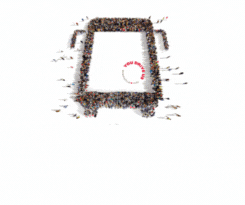
Photo: alev-takil-unsplash
How digital twin data is helping Madrid manage the impact of emissions
12 November 2024
by Christopher Carey
With data central to how cities conduct their day-to-day work, exploring ways to incorporate new technologies like digital twins while maintaining control over the vast quantities of data generated has proved challenging.
Speaking at last week’s Smart City Expo in Barcelona, Fernando De Pablo Martín, the Director General for Madrid’s Digital Office, said while there was potential for wider deployment of digital twins, that would require better interoperability across the city’s data infrastructure.
“In Madrid we have a data strategy and have been working through private and public partnerships with IT companies, companies that provide municipal services, and universities in order to improve the interoperability and serviceability of all the devices the city uses.
“This focus on IoT (Internet of Things) is very important, and is going to be a very important point for the future.”
The city’s digital twin enables the 3D mapping of different urban planning proposals and associated information, such as the estimated CO₂ emissions of different parts of the city and their projected impact by 2030.
Through the integration of predictive models, the system will allow the city to visualise and contrast different sustainable urban planning strategies, and ultimately reduce polluting gases and improve the efficiency of buildings.
The city says the technology could also be applied to waste management and the implementation of green spaces, in order to create a “carbon balance” in the city.
Industry view
Referencing the recent severe flooding in Valencia, Spain, Bentley Systems’ Chief Technology Officer Julien Moutte said the need for cities to act on climate change has become critical.
“Gone are the days where climate change and global warming effects were on the other side of the globe or just visible on TV, this is happening here now [and] the urgency to act is more pressing.
“Cities are the place where infrastructure networks and critical infrastructure assets – water, telecommunications, transportation, power etc – are converging, and in the context of urban areas all those critical infrastructure assets are interdependent.
“One decision made in an area has an impact on others, and to make the right decision in a specific infrastructure area, you also need context and information from all those other aggregates.”
As digital twins are increasingly used as a component of wider city planning, the need to maintain privacy standards while integrating data gathered across different functional areas is key.
“Some people talk about the impact regulation can have on innovation,” added De Pablo Martín. “But we have to have the trust of citizens in the way we manage data.”
Image: alev-takil-unsplash








